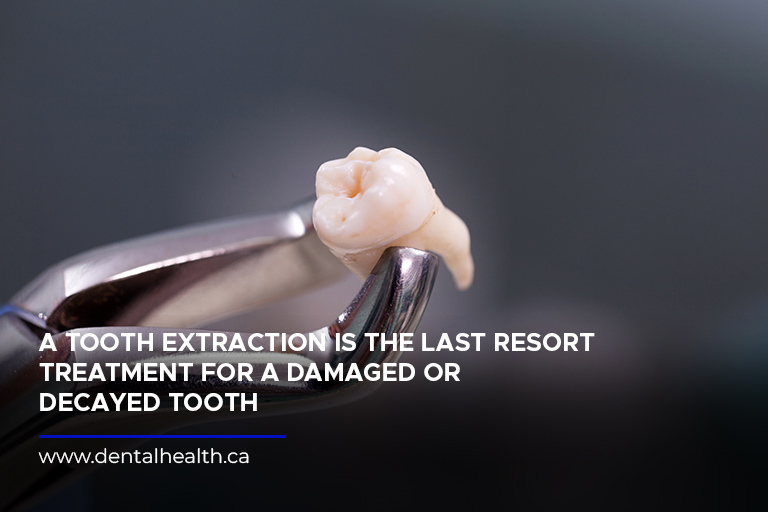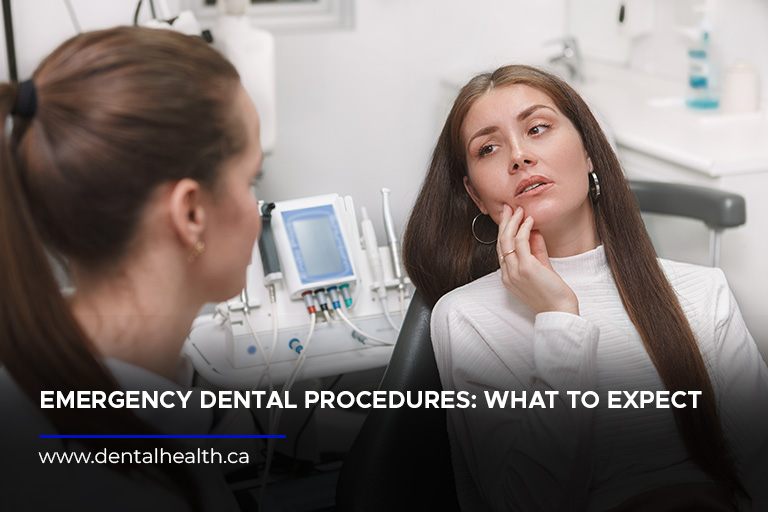Did you know that 40% of the Canadian population has some level of fear about going to the dentist? If routine visits can cause anxiety for a lot of people, it goes without saying that emergencies can be even more stressful. The reality is that when most people have a dental emergency, they have no idea what to expect. While it’s true that these situations can be unpredictable, you can still educate yourself so you won’t feel completely out of sorts if a tooth emergency arises.
Read on to learn about some of the most common emergency dental procedures and what to expect.
Tooth Extraction

A tooth extraction is a dental procedure where a tooth is removed from its socket in the jawbone. This is typically done when a tooth is damaged, decayed, or causing other dental issues.
The process involves numbing the area around the tooth with a local anesthetic to ensure the patient doesn’t feel pain during the extraction. Once the area is numb, the dentist or oral surgeon uses specialized tools to loosen the tooth from its socket and then gently remove it.
What to Expect
During your tooth extraction, you can expect some pressure and pulling sensations while the dentist works to extract the tooth. You shouldn’t feel pain, but it’s normal to experience some discomfort or pressure. These feelings vary from person to person, and factors like the tooth’s location and condition can influence this.
After the extraction, your dentist may place a gauze pad over the extraction site to control bleeding and promote blood clot formation. They might also provide post-operative instructions, such as avoiding certain foods, not rinsing vigorously, and taking prescribed medications if necessary. Swelling and mild discomfort are common after the extraction, but these symptoms usually don’t last long.
It’s essential to follow the post-operative instructions provided by your dentist to ensure proper healing and minimize the risk of complications. Sometimes, the dentist might recommend rest and avoiding strenuous activities for a day or two after the extraction. Additionally, they may suggest over-the-counter pain relievers or prescribe medications to manage any post-extraction pain.
Crown
A dental crown is a tooth-shaped cap that is placed over a damaged or decayed tooth to restore its shape, size, and strength and improve its appearance. Crowns are typically recommended when a tooth is extensively decayed, weakened, or has undergone a root canal. The crown acts as a protective cover, encasing the entire visible portion of the tooth above the gum line.
What to Expect
Getting a crown usually starts with your dentist numbing the tooth and the surrounding area with a local anesthetic. This ensures that you don’t experience any pain during the treatment. Once the area is numb, your dentist shapes the tooth to make room for the crown. This might involve removing part of the tooth’s outer layer to create a strong foundation for the crown.
After shaping the tooth, your dentist will take impressions of your teeth. These impressions are then sent to a dental laboratory where the custom crown is made to match the size, shape, and colour of your natural teeth. Your dentist may place a temporary crown over the prepared tooth to protect it until the permanent crown is finished.
During the second visit, the temporary crown is removed, and the permanent crown is carefully fitted onto the tooth. Your dentist will check the fit and make any necessary adjustments to ensure proper alignment with your bite. Once satisfied with the fit and appearance, the crown is permanently cemented in place.
After the procedure, it’s normal to experience some sensitivity, especially to hot or cold temperatures, for a short period.
Abscess Draining
A tooth abscess, which is a pus-filled bump that typically appears on the gums, commonly occurs as a result of tooth decay. Abscesses can also form when teeth are injured or infected. Not only can a tooth abscess be very painful, but it can also be detrimental to your oral health if left untreated.
What to Expect
If you have a tooth abscess, there is a good chance that your dentist will need to drain it. As with most other emergency dental procedures, your dentist will apply a local anesthetic on and around the abscess to prevent pain. Then, your dentist will make a small cut in the abscess to release the fluids.
Following drainage, meticulous cleaning of the area is undertaken to remove any remaining debris or infectious material. In some cases, depending on the severity of the infection, dentists may prescribe antibiotics to further combat the bacteria and facilitate the healing process.
Bonding of Chipped/Broken Teeth

Chipped/broken teeth are a very common occurrence. Not only can a broken tooth impact your appearance, but it can also have implications for your oral health. Fortunately, a dental bonding procedure can restore your smile and help prevent future problems.
What to Expect
Prior to your procedure, you will have a consultation with your dentist so they can evaluate your chipped/broken tooth. In some cases, you may need to have X-rays done. From there, your dentist will prepare the tooth by lightly etching its surface with gel to create a textured surface and enhance the bonding process.
Anesthesia is usually not needed unless the bonding is part of a cavity filling. The next step involves applying a bonding agent to the prepared tooth, allowing for a secure attachment of the tooth-coloured resin. Special tools are used to ensure proper contour and alignment.
Once the shaping is complete, a curing light is used to harden each layer of the resin quickly. The final touch involves refining the bonded tooth’s shape and polishing it to match the natural teeth.
Root Canal
Root canals are done to treat an infected or damaged tooth’s pulp, which is the innermost part containing nerves, blood vessels, and connective tissue.
What to Expect
When most people hear that they need to have a root canal done, they feel a little uneasy. However, despite its reputation, a root canal is a routine and generally painless procedure.
During a root canal, your dentist will remove the infected or damaged pulp, cleaning and disinfecting the inside of the tooth and then sealing it to prevent further infection.
After the root canal, the tooth is often restored with a crown or filling to protect and strengthen it.
Get in Touch With a Grimsby Dentist
Needing emergency dental care doesn’t have to be a scary or stressful experience. If you’re looking for an experienced dentist in Grimsby, our team at Kingsway Family Dentistry is at your service. We offer emergency dentistry services in a comfortable and caring environment. Contact us today at (905) 563-4001 to learn more about our services or to book an appointment.

